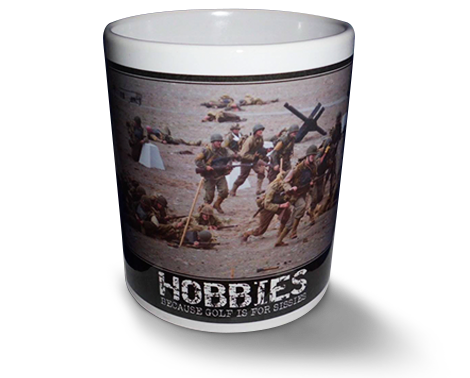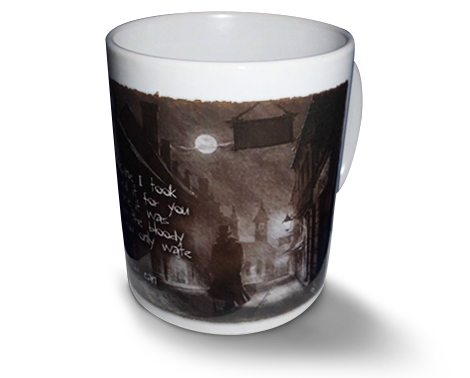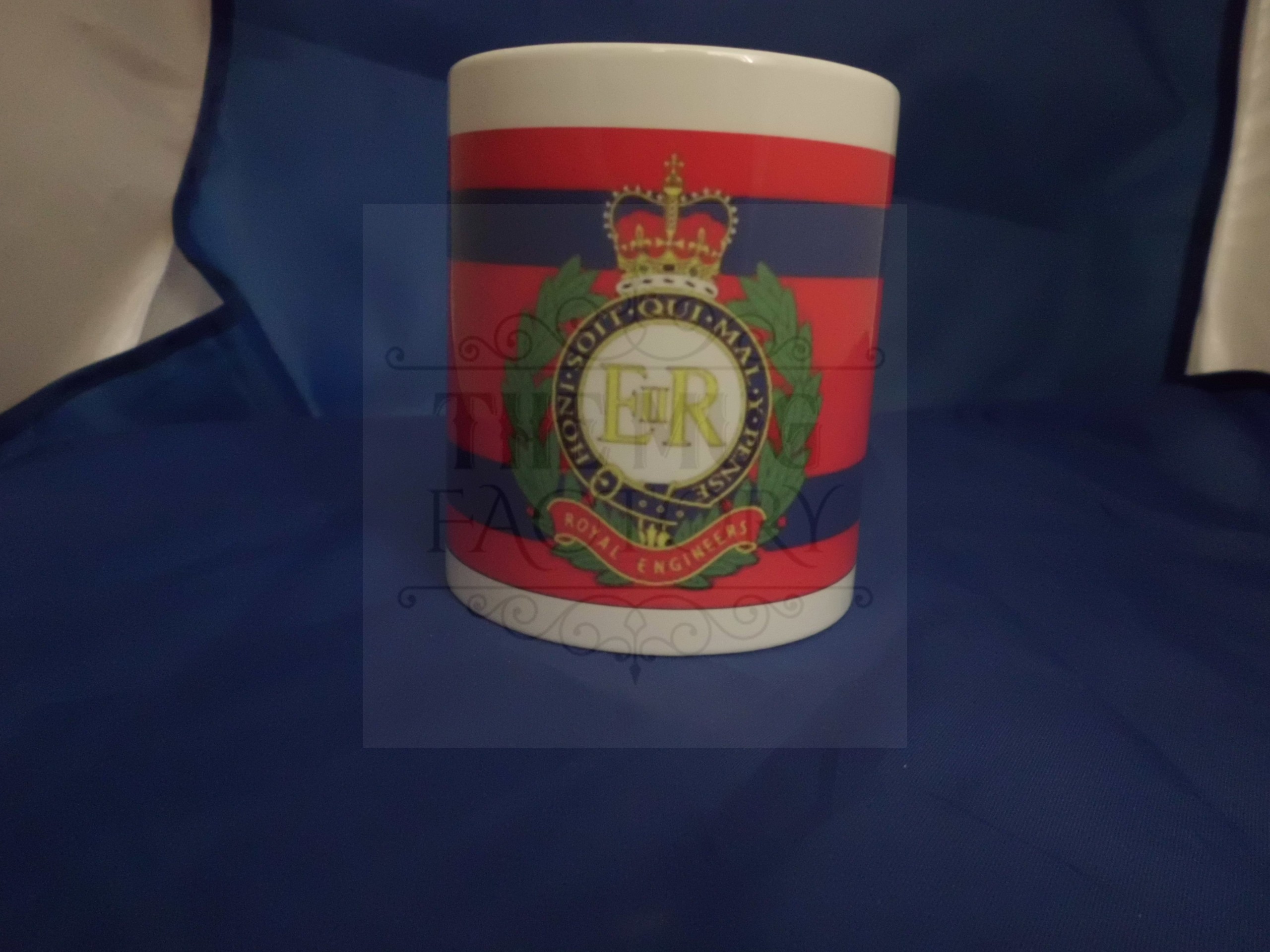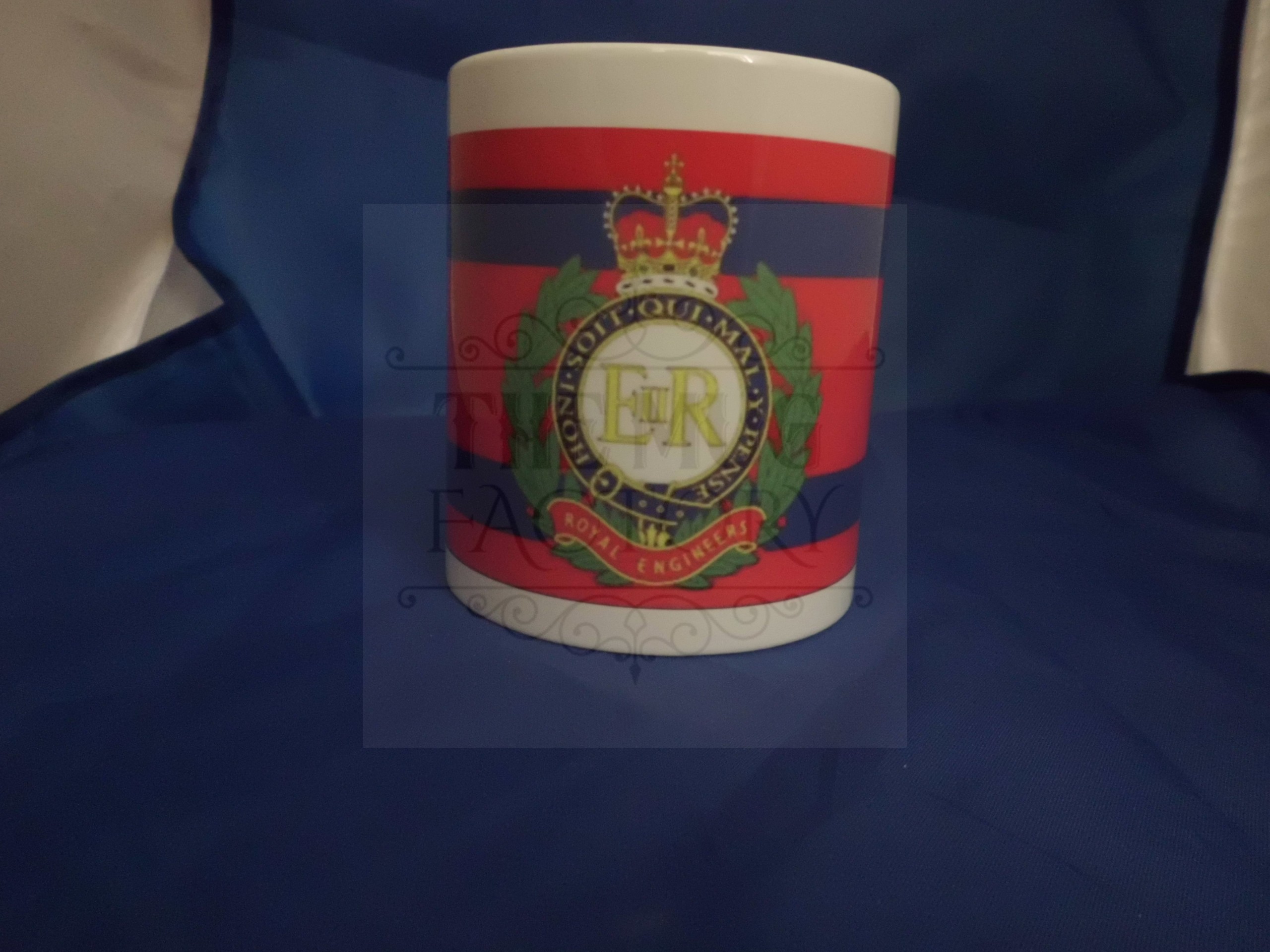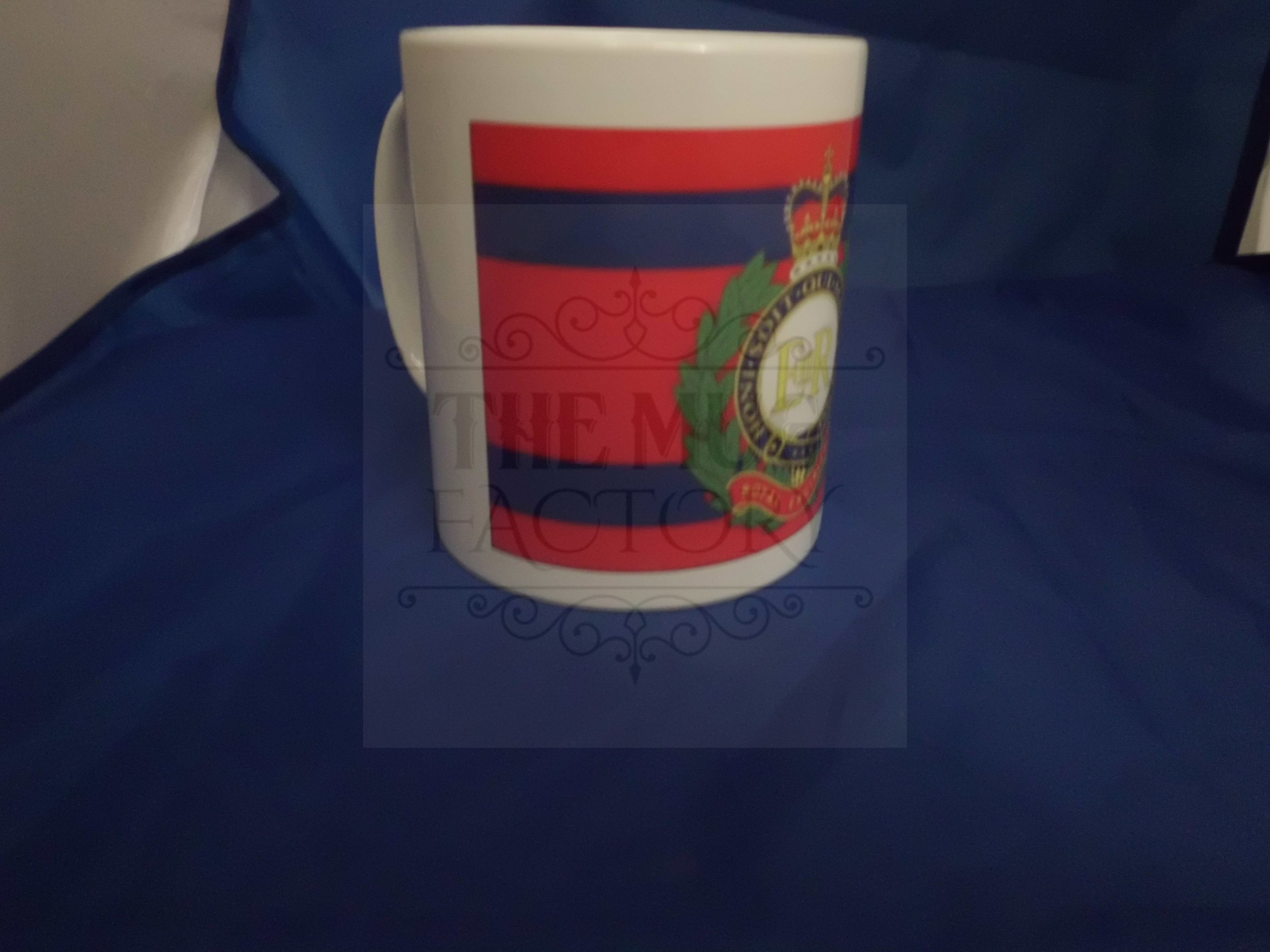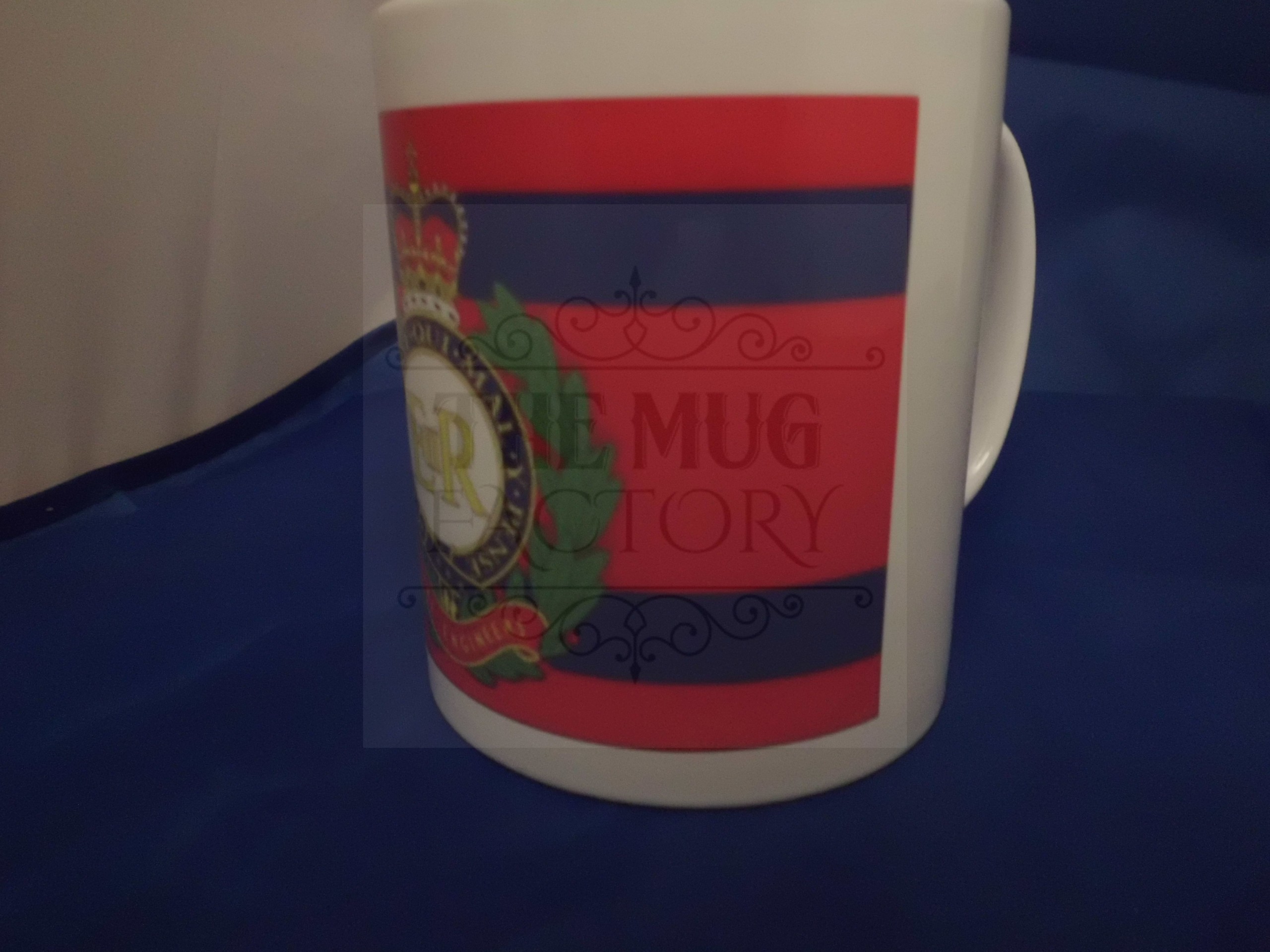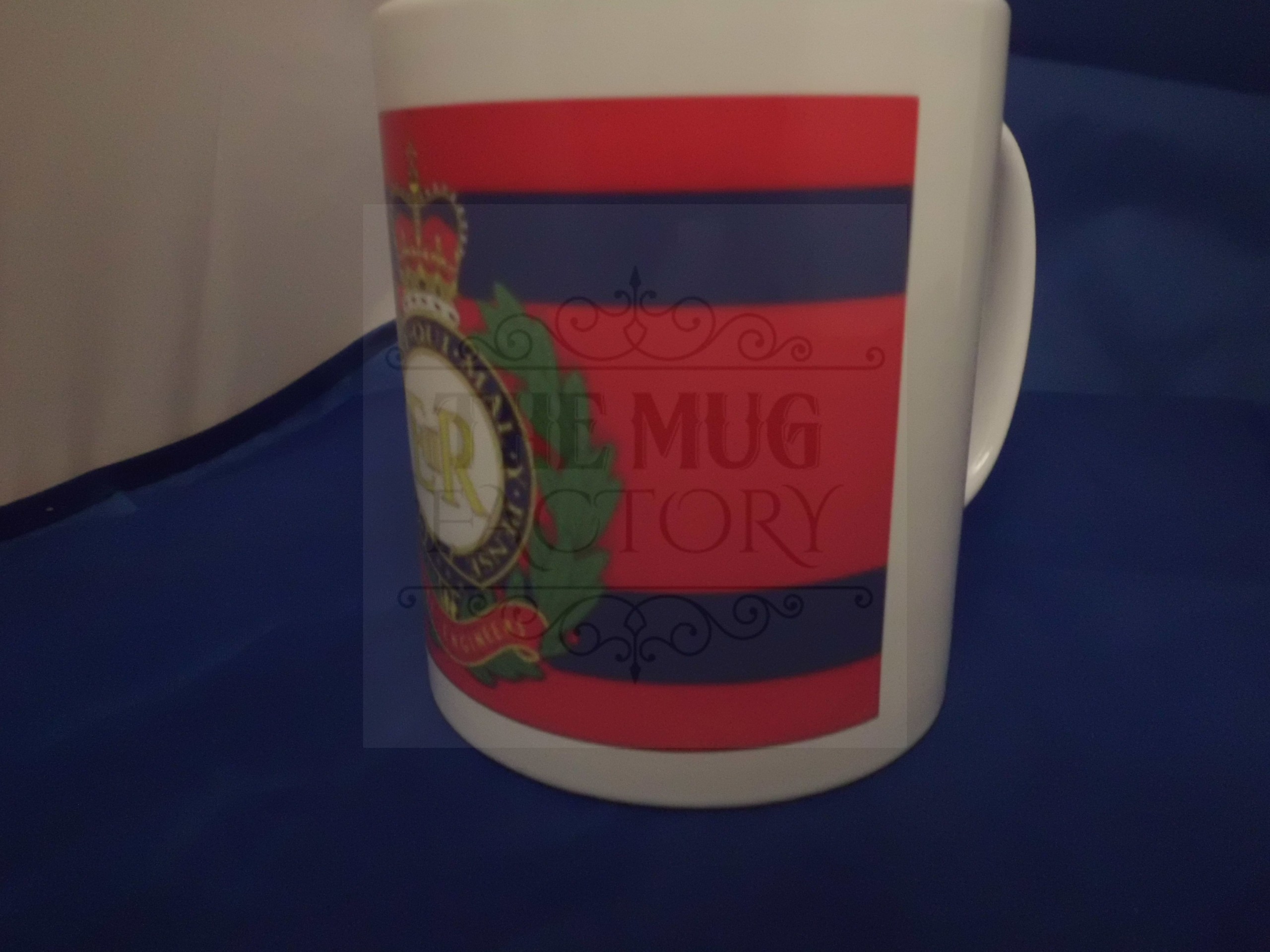Royal Engineers military Mug
Royal Engineers Mug 11oz
Shop online for Sapper mugs, gifts all in the UK including this ceramic Royal Engineers Coffee Mug which can be personalised with your service details.
Royal Engineers (RE), and commonly known as the Sappers, is one of the corps of the British Army. It is highly regarded throughout the military, and especially the Army.
Corps of Royal Engineers is unique with all our "Sappers" being multi skilled soldiers, combat engineers and tradesmen working alongside all parts of the Army. We play a vital role in the effectiveness of the British Army and the United Kingdom in both peacetime and on operations.
British military engineering can be traced back to the Anglo-Saxons and King Offa of Mercia in the late 8th Century. Later, in 1066, William the Conqueror’s King’s Engineer, Humphrey de Tilleul, erected a pre-fabricated fort at Hastings after the battle with King Harold. He was succeeded as King’s Engineer by a monk named Gundulph, who became Bishop of Rochester and famously oversaw the construction of the White Tower in the Tower of London. In 1415 Nicholas Merbury, who had been King Henry V’s King’s Engineer at the Battle of Agincourt, was made the first Master of the King’s Works and Ordnance under whom was established an Office of Ordnance, which in 1518 was renamed the Board of Ordnance.
Although the title of King’s Chief Engineer was increasingly used in the 17th Century, it was not a singleton appointment designating the head of an engineer branch until, in 1660, King Charles II appointed Sir Charles Lloyd as the first permanent Chief Engineer of England. In 1714 the organisation of the Board of Ordnance was reassessed and the then Chief Engineer, the Right Honourable Brigadier Michael Richards, proposed that artillery and engineers should be placed on separate establishments. This was subsequently enacted by Royal Warrant on 26th May 1716 and it is from this point that the Royal Artillery and the then Corps of Engineers pursued their separate paths, the latter consisting solely of officers, numbering 28 in all.
The growth of overseas garrisons and expeditions, and the need for engineer officers to support them, saw the Corps of Engineers increase and in 1757 they were given military officer rank. Thirty years later a Royal Warrant dated 25th April 1787 granted ‘Royal’ status, leading to the current Corps of Royal Engineers title.
In parallel with these developments, events in Gibraltar had inspired the Chief Engineer there to gain authority on 6th March 1772 to form the first ‘Soldier-Artificer Company’ - the fore-runners of today’s non-commissioned ranks. Later, on 10th October 1787, the Corps of Military Artificers was formed and on 6th March 1813 it became the Corps of Royal Sappers and Miners, both of which were officered by the Corps of Royal Engineers. But it was not until the abolition of the Board of Ordnance in 1855 that, on 17th October 1856, the Corps of Royal Sappers and Miners was amalgamated with the Corps of Royal Engineers to form the Corps we know today. Later, in 1877, the Royal Monmouthshire Royal Engineers (Militia) was incorporated into the Corps of Royal Engineers. Although not initially part of the Royal Engineers, it can nevertheless trace its origins as far back as the Muster Roll of 1539 and is now the senior Reserve Regiment in the Army.
From the middle of the 19th Century, Royal Engineers were involved in virtually every scientific development and technical function of the Army. From mapping to fortifications, transport to communications, diving to flying, and bomb disposal to high risk search, Royal Engineers have been at the forefront of nurturing new ideas and capabilities, which included a variety of famous civil endeavors. Lieutenant Colonel John By played a major role in the early development of Canada, including the building of the Rideau Canal in the 1820s which is now a World Heritage Site. The Royal Albert Hall was designed by two Royal Engineers, Major General Henry Scott and Captain Francis Fowke, and Major General Edmund Du Cane and Colonel Sir Joshua Jebb directed many of the prison reforms during the Victorian era. Others continued the work of their forebears in the Ordnance Survey by conducting mapping operations across the British Empire, and many made names for themselves as colonial governors in the West Indies and Australia.
At the start of the 20th Century, the Royal Engineers handed over responsibility for submarine mining to the Admiralty in 1904, and in 1912 the Royal Engineers Air Battalion merged into the new Royal Flying Corps, which in turn led to the formation of the Royal Air Force in 1918. By 1914 responsibility for mechanical transport had been transferred to the newly formed Royal Army Service Corps, and in the same year one of the Royal Engineers most famous forebears, Field Marshal Lord Kitchener, became Secretary of State for War. After the First World War, the the Royal Corps of Signals was formed in 1920 out of the Royal Engineers Signals Service. Later, in 1965, the Royal Engineers handed over responsibility for railway and inland waterway transport, port operations and movement control to the Royal Corps of Transport, and in 1994 the Postal and Courier role was transferred to the Royal Logistic Corps.
The Corps of Royal Engineers has a very proud history that has seen Sappers take part in every major campaign and action fought by the British Army over the last 300 years. This continues to this day and sees the Corps fully engaged in operational deployments enabling and supporting all elements of the UK’s Armed Forces.

